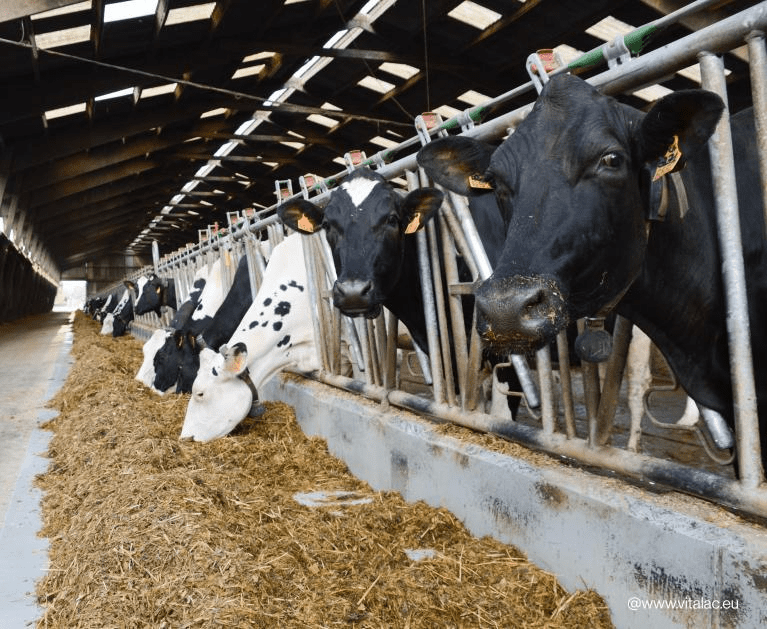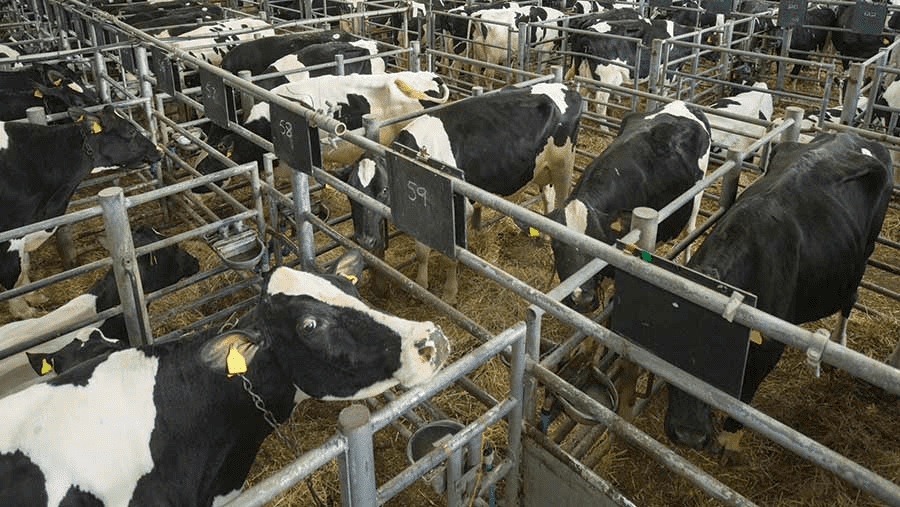All animals have dietary nutrient levels at which they exhibit optimal performance either for production or maintenance. This is what is referred to as the nutrient requirement of the animal and it is a function of age, type of animal size of animal, and production.
All the nutrients namely, energy, protein, fat/lipid, vitamins, minerals, and water have specific functions in the animal. Of all the mentioned nutrients, two are of utmost importance they constitute the bulk. These are energy and protein which will be discussed in more detail than the others in this unit.
Energy and Protein Requirement for Cattle
There are two types of cattle namely beef and dairy cattle. Energy and protein are needed by the animal for such activities as physical, metabolic, and physiological or for maintenance. For beef production, in addition to maintenance, the animal requires energy to deposit flesh whereas dairy cattle require more energy for pregnancy and production of milk.
A mature cow with an average weight of about 300 to 400 kg will require about 150 to 250 g of digestible crude protein (DCP) daily. It will also require 6 to 11 Mcal (mega calorie) of metabolizable energy (ME) for maintenance.
If the cow is lactating, it will require an additional 40 to 45 g of DCP and about 1.2 – 1.3 Mcal. of metabolizable energy. For pregnancy, the same cow will require about 290 g DCP and 12. 4 Mcal. ME. Generally, cows must not be fed less than 2.5 – 3% of dry matter content of their body weight.
Read Also Sheep Milk Production Complete Guide
Energy and Protein Requirement of Sheep

The nutrient requirements in sheep and goats appear very similar except for dairy goats and sheep kept for wool. Sheep and goats consume 3 – 5% dry matter of their body weight per day.
A growing lamb of 5 to 40 kg live weight, will consume dry matter about 3 to 4% of the body weight. Such a lamb will require a daily digestible crude protein of 33 to 67 g digestible crude protein g or 18 to 21.5% of the daily ration. It will also require about 0.65 to 2.50 Mcal ME.
Fatteners require an average dry matter intake of about 5% of their body weight, about 52 to 80 g of digestible crude protein, or 12 -13% of dry matter intake. They will also require 1.49 – 2.92 Mcal ME.
For the early gestation period (about 15 weeks), the dry matter intake should not be more than 2.5 to 3% of body weight with daily crude protein of 49 to 100 g or about 7.5 to 8.2% of the dry matter intake. In the last six weeks of gestation, the dry matter intake should be about 3 to 4% of the body weight while the crude protein requirement at this stage is about 8 – 10% of the dry matter intake.
Read Also Huckleberries: History, Nutrition, Health Benefits and Growing Guide
Energy and Protein Requirement of Goats
There are different energy and protein needs for growth or production in goats. Growing kids of goats require about 18 to 21% crude protein and about 2.52 Mcal metabolizable energy. These requirements decrease as kids grow in body weight. The crude protein need may be as low as 10%
of the dry matter intake while the energy is 2.16 Mcal ME. The buck will require about 8 – 11% crude protein and about 1.5 – 2.34 Mcal ME. The pregnant doe will require a dry matter intake of about 4% body weight. It will also need 8 to 10 % crude protein of the dry matter intake and 2 to 2.50 Mcal ME.
Mineral requirement
Minerals are organic and inorganic compounds that play vital roles in the metabolic and other physiological development of animals. They are classified as macro and micro minerals. The macro minerals include calcium, phosphorous, magnesium, sodium, potassium, and chlorine.
Microminerals are iron, copper, cobalt, iodine, zinc, molybdenum, selenium, fluorine, sulfur, and chromium. The requirement of macro minerals is expressed in grams per day or percentage whereas the micro ones are in parts per million (ppm).
Minerals must be adequately supplied to the animal to prevent mineral deficiency and nutritional disease. Calcium and phosphorous must be well supplied in the cattle, sheep, and goats’ ration for bone development and milking. Beef cattle require about 0.24% calcium and 0.22% phosphorous in their diet.
Dairy cattle will require about 0.28% calcium and 0.25% phosphorous. Pregnant cattle will require 0.23% calcium and 0.23% phosphorous. Sheep and goats require 0.23% calcium and 0.23% phosphorous in their diets.
Sources of calcium and phosphorous in the diets of the ruminants are bone meal, oyster shell, and dicalcium phosphate. Salt is given to ruminants as a salt lick either as a form of block or by pouring some little quantity in the feeding trough to supplement what the animal must have taken from other feed ingredients.
In summary, there is an amount of nutrients required for maintenance and production. Cattle require 2.5 to 3% of their body weight as dry matter intake while sheep and goats require 3 to 5% of their body weight as dry matter intake. The protein and energy needs of dairy or lactating animals are higher than those of non-lactating animals.
Read Also The Different Types of Fertilizers and How they Work

